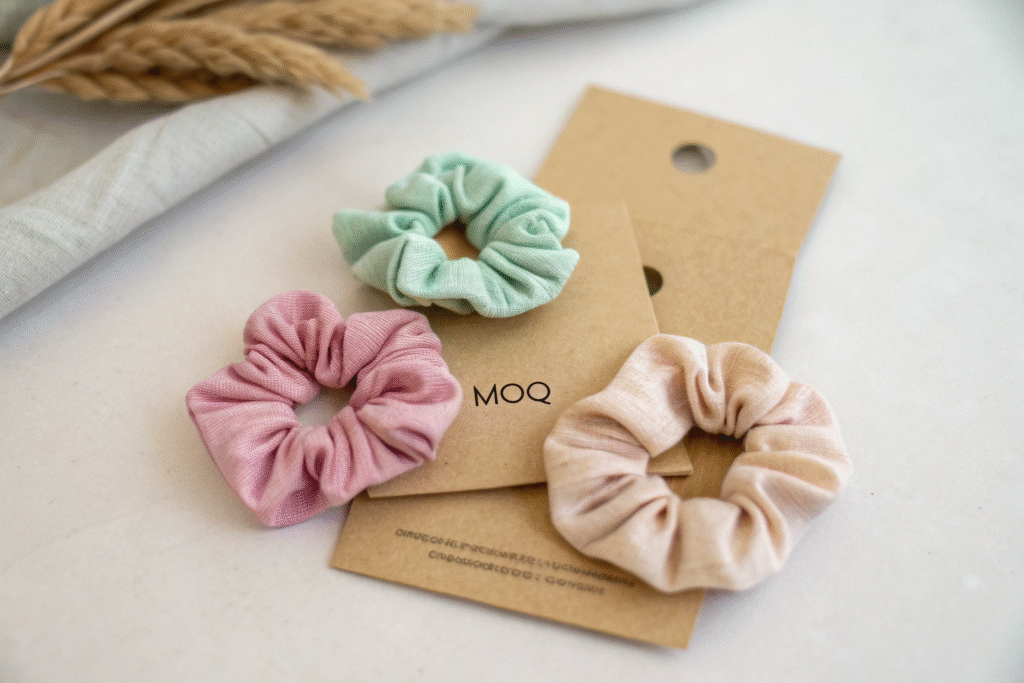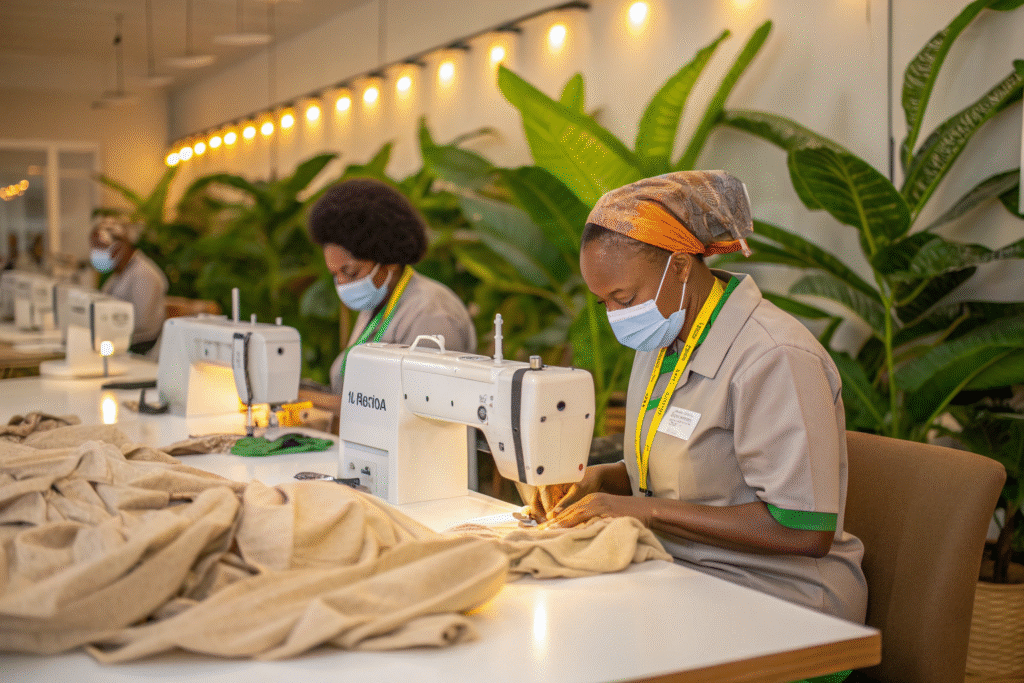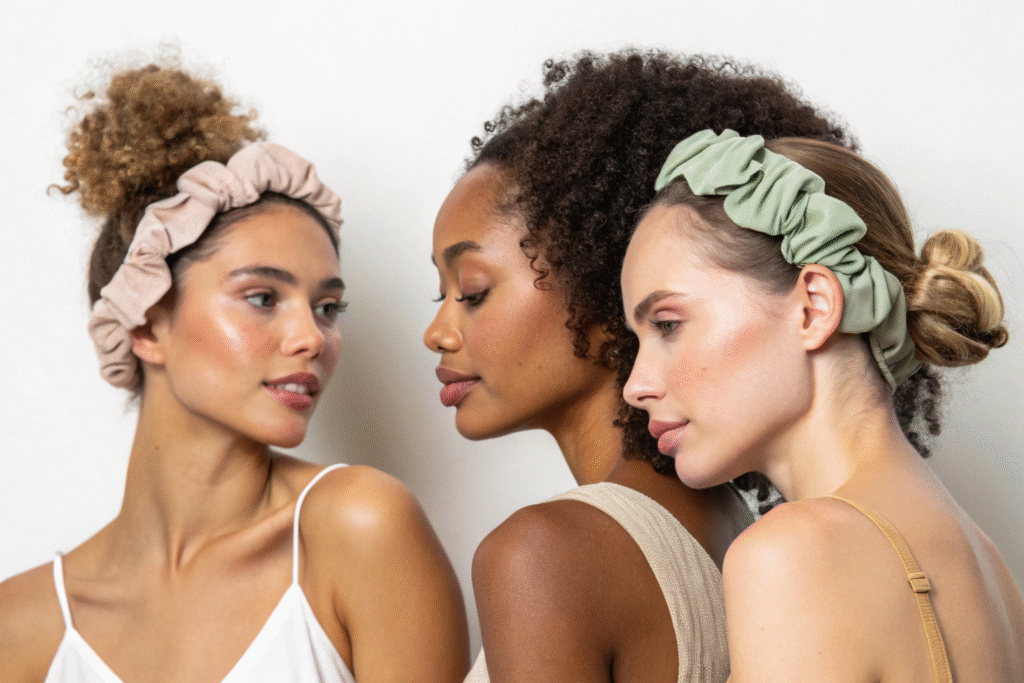When buyers consider sourcing biodegradable scrunchies, one of the first questions that comes up is about the minimum order quantities (MOQs). This concern is especially important for fashion buyers, boutique owners, and startup e-commerce sellers who want to test new eco-friendly accessories without committing to large inventories. If you are in this position, you might feel worried about investing too much money up front, unsure whether your customers will respond well to the product.
The truth is that MOQs for biodegradable scrunchies vary widely depending on the materials, supplier, and customization level. While some factories set MOQs as high as 300 pieces, other eco-focused manufacturers are open to much smaller runs, starting at 50 pieces or even less. This flexibility means that businesses of all sizes can enter the market for sustainable hair accessories without overwhelming risk.
If you are planning your next order, you need to know what ranges are typical and what factors influence them. By understanding these, you can better negotiate with suppliers, avoid unnecessary costs, and build a profitable product line.
Why Do MOQs Matter in Sustainable Fashion?
Sustainable sourcing is more than just choosing organic fabrics. For buyers, the order size directly affects budget, storage, and risk. MOQs set by manufacturers can either empower smaller businesses or block them from testing new eco-friendly products.
MOQs matter because they determine how accessible biodegradable scrunchies are to startups and mid-size retailers. Lower MOQs make it easier for brands to experiment, while higher ones often limit eco-fashion to larger buyers. Understanding the logic behind MOQs helps businesses plan smarter.

Manufacturers often calculate MOQs based on production costs, material availability, and efficiency in the production line. Eco-friendly fabrics like bamboo, organic cotton, or natural rubber may have higher raw material costs, which leads to higher MOQs compared to synthetic alternatives. However, some suppliers specialize in small-batch sustainable production, allowing buyers to balance risk and sustainability goals.
What factors influence MOQ for biodegradable scrunchies?
Several elements play into MOQ setting. Material sourcing is key; organic or biodegradable textiles are harder to scale than polyester. Another factor is dyeing and finishing processes, especially when using plant-based dyes. Lastly, packaging requirements like biodegradable wrappers or recycled paper boxes also raise costs. Buyers should ask suppliers about each of these cost layers before ordering. For more insight, you can check resources on eco-friendly packaging or learn from organic cotton suppliers.
Are there advantages to negotiating lower MOQs?
Yes, many. Lower MOQs help businesses test product-market fit, reduce cash flow pressure, and stay agile in responding to consumer demand. While larger orders usually bring price discounts, smaller MOQs allow for more creativity in design and quicker changes to meet fashion trends. Entrepreneurs can review advice from Alibaba’s small order program or explore platforms like Faire that support boutique-sized wholesale purchases.
What Are Typical MOQ Ranges for Biodegradable Scrunchies?
The actual MOQ depends on the supplier, but we can categorize it into common ranges based on industry practice.
In general, biodegradable scrunchies have MOQs ranging from 50 to 300 pieces, with some boutique suppliers offering even smaller runs for premium eco-friendly buyers. This range gives room for different types of businesses to participate in sustainable fashion sourcing.

Some suppliers require higher volumes to cover the costs of custom dyeing or fabric treatments. Others, especially those who focus on organic and eco-friendly niches, are willing to accommodate smaller orders since they target boutique retailers. As a buyer, knowing these ranges helps you choose the right partner for your goals.
How low can MOQs go for eco-friendly scrunchies?
MOQs can be surprisingly low, sometimes as little as 10 to 20 pieces when working with direct-to-boutique suppliers. For example, brands like KOOSHOO highlight their flexibility in serving small retail shops. Another option is to work with silk accessory suppliers who already handle low MOQs for scrunchies. Interested buyers can see small-scale offerings on Etsy Wholesale or review ethical sourcing platforms like Good On You.
When do MOQs reach 300 pieces or higher?
Factories that prioritize efficiency and bulk production usually set higher MOQs, often around 200 to 300 pieces per color. This makes sense because setting up eco-friendly dyeing machines or cutting fabric in bulk is costly in small runs. Wholesale platforms such as Global Sources or Made-in-China often show this MOQ range for fabric accessories.
How to Negotiate MOQs with Suppliers?
Negotiating MOQ is part of every wholesale conversation. Buyers who understand supplier challenges have a better chance of getting favorable terms.
Negotiating MOQs successfully requires transparency about your order potential, willingness to pay slightly higher per-unit prices, and clear communication about future scaling. Many suppliers are open to compromise when they see long-term opportunity.

When approaching a supplier, it helps to ask if they already produce similar eco-friendly accessories for other clients. This may allow you to piggyback on existing production runs. Offering to simplify packaging or reduce design variations can also convince suppliers to lower their MOQ.
What strategies help reduce MOQ requirements?
One strategy is to order mixed colors within one material batch. For example, you could order 100 pieces split across four colors rather than 100 per color. Another is to pay a premium per unit to offset setup costs. Businesses can also align with supplier timelines to join larger runs. For practical negotiation tips, review sourcing insights on Supply Chain Dive or explore Alibaba’s Trade Assurance guide.
Can partnerships with multiple suppliers work?
Yes, many buyers manage MOQ challenges by splitting orders across different factories. This approach helps diversify risk and secure smaller quantities from each. However, it requires more effort in quality control and logistics. To learn more about multi-supplier sourcing, readers can explore ThomasNet or international trade blogs such as Import Yeti.
What Should Buyers Expect in Pricing and Lead Times?
MOQ is only part of the equation. Price and lead time are equally critical for eco-friendly fashion buyers.
Smaller MOQs often lead to slightly higher prices per unit, but they reduce risk and provide faster market entry. Lead times usually range from 15 to 45 days, depending on customization and material sourcing. Buyers must balance these factors when deciding how much to order.

Factories with in-house dyeing or embroidery usually deliver faster than those outsourcing these steps. For eco-friendly scrunchies, sourcing organic or biodegradable fibers may extend lead time if the raw materials are not in stock.
Do smaller MOQs always cost more?
Yes, but not always prohibitively. For instance, ordering 50 biodegradable scrunchies may cost 10–20% more per unit than ordering 300 pieces. The trade-off is flexibility. Paying slightly more upfront can save money if the product does not sell as expected. To calculate costs effectively, check wholesale advice from TradeGecko or retail pricing tools like Shopify.
How do MOQs affect delivery timelines?
Smaller MOQs may benefit from quicker turnaround, as they fit into gaps in factory schedules. Larger MOQs may require longer lead times because suppliers prioritize efficiency over speed. Eco-focused suppliers often plan production in monthly cycles, so timing orders around these windows helps. You can explore production planning insights on Manufacturing.net or sustainability sourcing platforms like Sustainable Apparel Coalition.
Conclusion
Biodegradable scrunchies are becoming a popular choice for eco-conscious consumers, but for buyers and retailers, MOQ remains a central consideration. Typical MOQs range between 50 and 300 pieces, but boutique suppliers sometimes offer even smaller runs. Buyers who negotiate effectively, understand supplier challenges, and plan for lead times will secure better deals and reduce risk.
If you are planning to source biodegradable scrunchies or any other sustainable hair accessories, we at Shanghai Fumao are ready to help. With our large-scale factory, strong design team, and cooperative partners in dyeing, printing, and packaging, we ensure both flexibility and quality. To discuss your order, please reach out to our Business Director, Elaine, at elaine@fumaoclothing.com.









